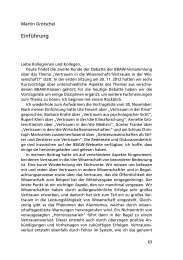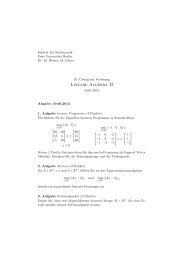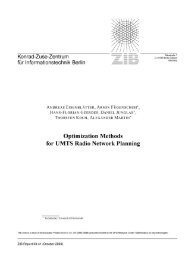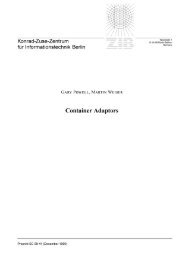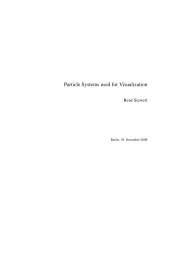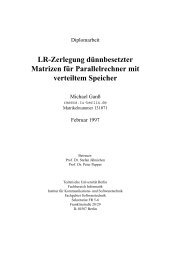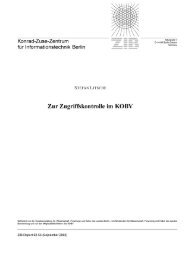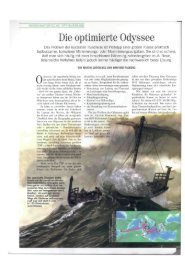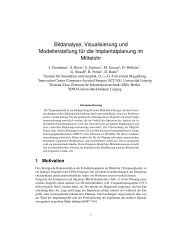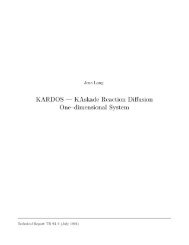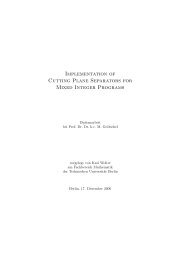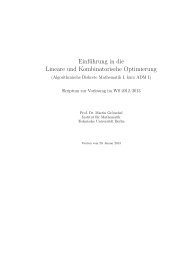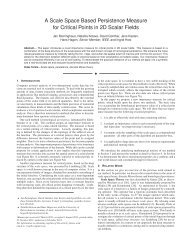SC-90-09.pdf - ZIB
SC-90-09.pdf - ZIB
SC-90-09.pdf - ZIB
You also want an ePaper? Increase the reach of your titles
YUMPU automatically turns print PDFs into web optimized ePapers that Google loves.
We note that under the hypothesis of Theorem 1.1 we have x k+1 £ S(x k , 2/co)<br />
because<br />
|| x *+i - x k \\< Hx 1 _ x°|| < a < 2/w (1.14)<br />
so that D* is a connected set. We have clearly S(x*, 2/OJ) H D C D*. Moreover,<br />
it is easily seen from (1.8) that if h < 1/2 then x* £ S(X°,2/UJ).<br />
An immediate straightforward consequence of assumption (1.12) is — in the<br />
just introduced notation — that<br />
J F'(x)- 1 (F{y) - F(x) - F'(x)(y - *)) ||< u/2\\y - x\\ 2 , Vx, y € D . (1.15)<br />
This auxiliary result permits now a more detailed study of the attraction ball<br />
of Newton's method.<br />
Theorem 1.2 Let F : D C X —>Y be a nonlinear operator defined on a convex<br />
domain D of a Banach space X with values in a Banach space Y. Suppose that<br />
F is Frechet differentiable on D, that F'(x) is invertible for each x £ D, and<br />
that (1.12) is satisfied. Moreover, assume that equation (1.1) has a solution<br />
y* 6 D. Let y° £ D be such that<br />
S(y*,\\y°-y'\\)cD<br />
(Lie)<br />
and<br />
y°eS(f,2/u). (1.17)<br />
Then the iterates given by Newton's method<br />
yM-i =yk_ F'(/)-i F(j/ *) k = 0,1,... (1.18)<br />
remain in the open ball S(y*, \\y° — y*\\), converge to y* and satisfy the following<br />
inequality<br />
||2/ fc+1 -yi



